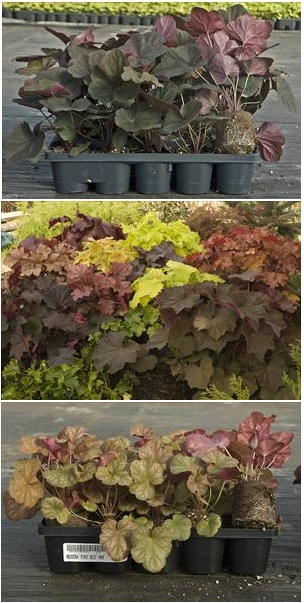info@bloomindesigns.com
Welcome to our perennial plant nursery!
Imagine More Perennial Plants Than You Can Imagine,
Delivered To You with Free Shipping to most states.
Shop by Category
Shop by Brand
Shop by Brand
Heuchera

Heuchera, more affectionately known as coral bells or alumroot, is a fantastically versatile and colorful perennial that is native to North America. Here is a rundown of what makes this plant special:
Key Features:
- Stunning Foliage: Heuchera is primarily grown for its incredibly diverse and colorful foliage. Expect a wide array of colors, including amber, burgundy, butterscotch, bronze, green, gold, purple, silver, and yellow. Many varieties also have unique variegation patterns.
- Delicate Blooms: While the foliage is the main attraction, Heuchera also produces small, bell-shaped flowers on tall, wiry stems. These blooms, often in shades of coral (hence the name!), add a charming touch.
- Adaptable Growth: These perennials are relatively easy to grow and tolerate a range of conditions. They do best in partial shade with well-drained soil, but many can handle full sun in cooler climates.
- Variety of Uses: Heuchera's mounding habit makes it ideal for borders, edging, rock gardens, and container planting.
Why Gardeners Love Heuchera:
- Low Maintenance: Once established, Heuchera requires minimal care.
- Long-lasting Color: Their colorful foliage provides interest throughout the growing season.
- Attracts Pollinators: The flowers attract hummingbirds and butterflies.
- Deer Resistant: Heuchera is generally unappealing to deer.
- Cold Hardy: Many varieties are hardy in USDA zones 4-9, tolerating a wide range of temperatures.
If you are looking for a plant that provides long-lasting color, texture, and versatility in the garden, Heuchera is an excellent choice!
